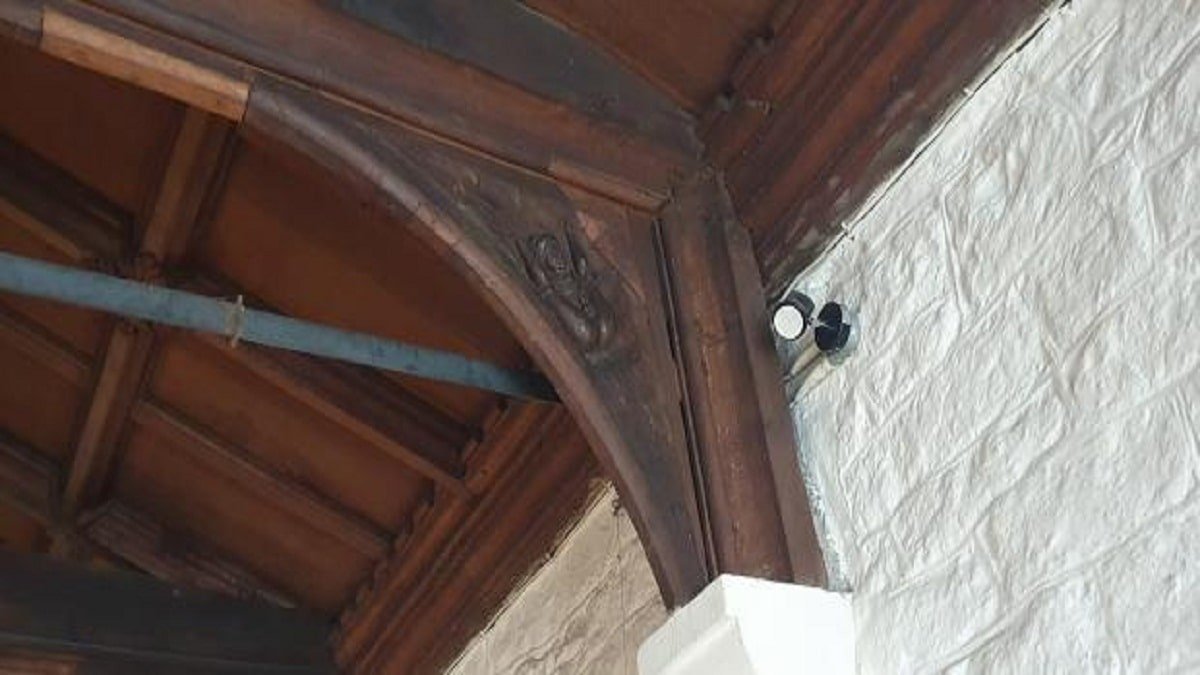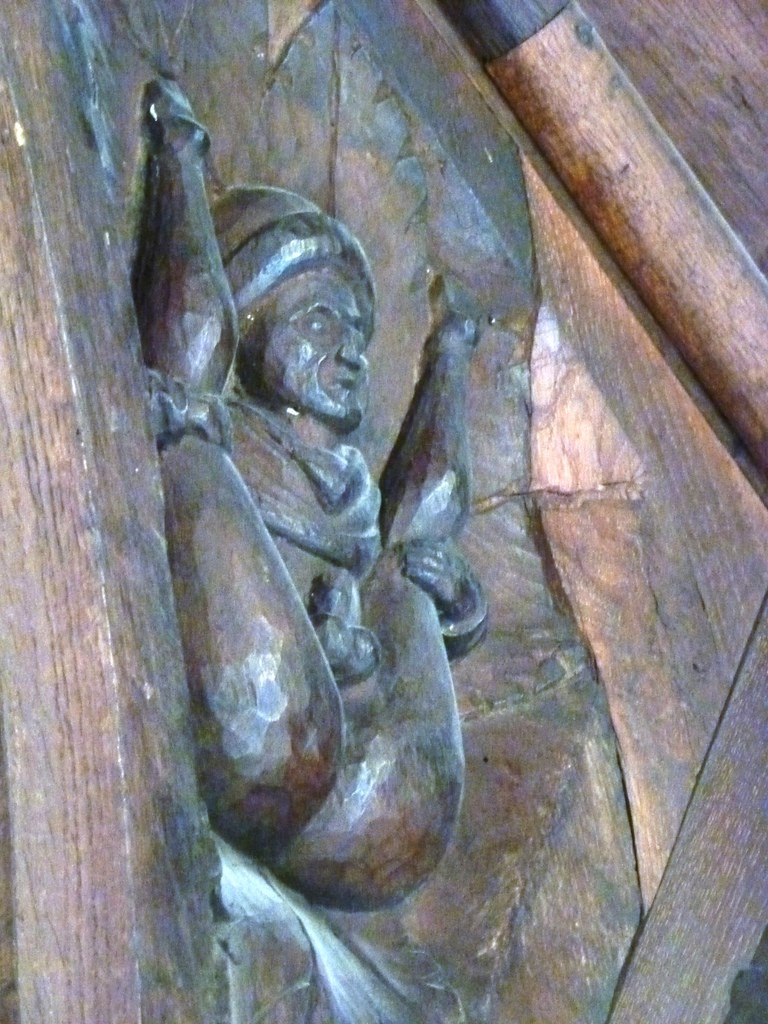A detail of a sculpture carved from an 800-year-old church in Hereford, England, caught the attention of a regular and sparked an internet debate. The image shows a man with his legs up, in an erotic position. It is located in the Church of All Saints and was discovered due to the construction of a cafe.
According to publications, the image was detected when it was illuminated by strong lights located on an extra floor in the establishment next to the church.

The sculpture shows a naked man holding his legs up, exposing his genitals. An online forum user hypothesized that the hoist was a carpenter’s “revenge” for not receiving his pay at the time.
The All Saints exhibitionist has raised quite a few eyebrows in recent years – in part because he’s now more visible to the public since the church started serving coffee and provided seats and table in an upstairs gallery below the roof from which he moons down on us. He’s unusual in all kinds of ways. Although grotesques, even obscene ones, are not uncommon on medieval churches, they most often occur on the outside. When they do appear inside, they’re usually above doorways, arches, or entrances, and for many, this helps to explain their presence: they’re there, it’s said, to ward off evil spirits attempting to enter a sacred space. They do this, it is argued, by means of a kind of homoeopathy perhaps best summed up in the phrase ‘like cures like’. This kind of protective notion does not explain this figure’s presence high in the roof. Neither does another theory, that they are there to dissuade us from the sins they represent – before the construction of the gallery the exhibitionist was very difficult to spot.
Literally hundreds of churches could employ skilled masons and just not make the proper payment. The ‘church’ being an institution, it was almost always impossible for the workers to receive their due that time.

According to the Hereford Times, similar carvings are well documented in churches across Europe, with images of naked women prevailing. “The carvings are believed to be intended to ward off death, evil and demons,” the website says. The cafe that lit up the image was built in 1990. The carving had already been seen by others and nicknamed “Seamus O’Toole”. The tabloid also claims that, at the time, there were plans to monetize the discovery by creating postcards, but the idea was stopped by the congregation for “pushing the limits of decency too far”.
Many like to suggest that he’s simply a carver’s joke. In one corner of the roof, he could have been done as the carver was finishing his work, and the scaffolding swiftly removed before the priest or the parish bigwigs had had the chance to inspect the roof too closely. We’ll never know whether this was the case. To modern eyes he just seems to be attracting attention of a particularly saucy kind. Something to ponder over the next cappuccino and cake.





